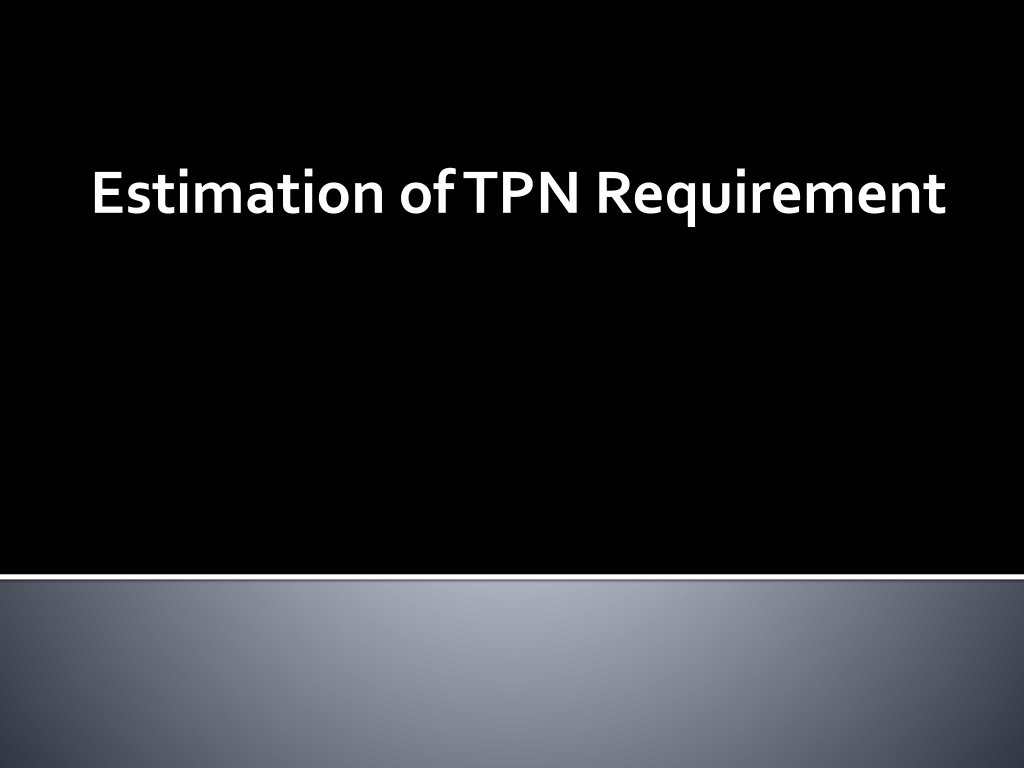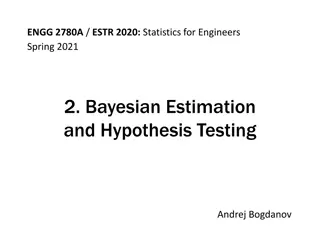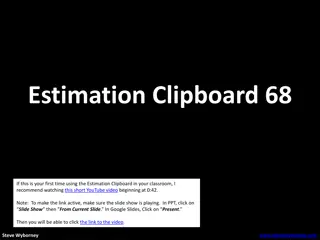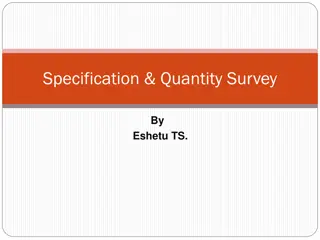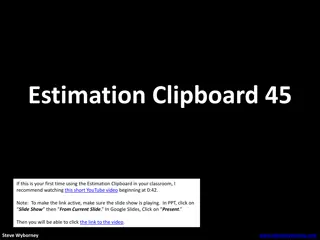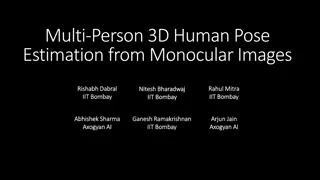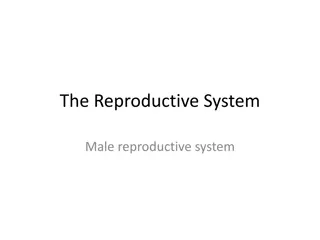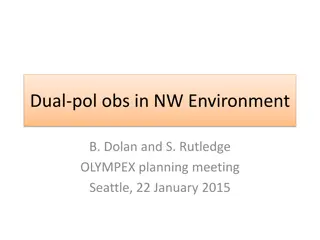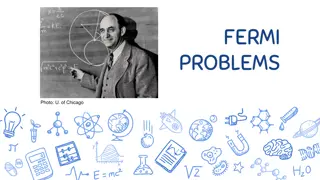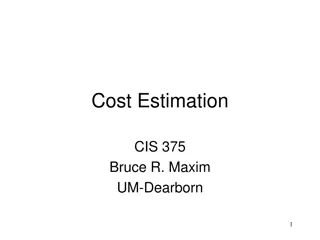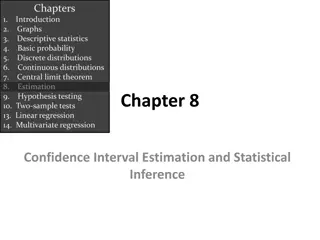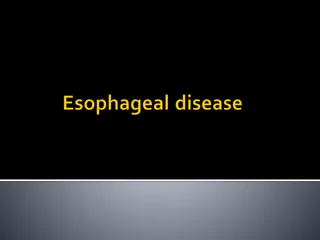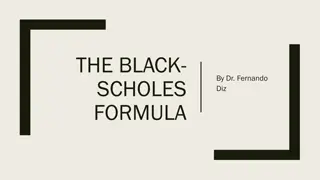Estimation of TPN Requirement for a 32-Year-Old Male
A 32-year-old male admitted to the hospital for closure of colostomy, requiring TPN due to intra-abdominal injury. Follow-up complications led to new anastomosis and TPN initiation. Interpretation of baseline parameters and fluid requirements in infants also discussed.
Download Presentation

Please find below an Image/Link to download the presentation.
The content on the website is provided AS IS for your information and personal use only. It may not be sold, licensed, or shared on other websites without obtaining consent from the author.If you encounter any issues during the download, it is possible that the publisher has removed the file from their server.
You are allowed to download the files provided on this website for personal or commercial use, subject to the condition that they are used lawfully. All files are the property of their respective owners.
The content on the website is provided AS IS for your information and personal use only. It may not be sold, licensed, or shared on other websites without obtaining consent from the author.
E N D
Presentation Transcript
MM 32 years old male was admitted to hospital on 27thMay, 2015forthe closureofcolostomy. Hiswt is 70kgandhtis 175cm. Past Medical History: Motor-Vehicle accident in 26thMarch 2015 Sustainedsevere intra-abdominalinjury Resection of ileum and sigmoid Colostomy was done in 26thMarch TPN indicated
30thMaypatient complaining ofgastric pain andvomiting. 2nd June leakage from anastomosis site causing intra- abdominalfluidaccumulation. Laparatomydoneandnew anastomosis wasdone. Nothing bymouth TPN started
Identification of patient Check for the indication absolute or relative indication Check for the availability of line central or peripheral Check whether partial or total parenteral nutrition Estimate the expected duration of parenteral nutrition
Interpretation ofbaseline parameters Nutritional assessment Anthropometric parameters Body Mass Index Mid arm muscle circumference Triceps-skinfold Weight to height comparison Creatinine Height Index
Interpretation ofbaseline parameters Nutritional assessment -Continued Biochemical Albumin Transferrine Pre Albumin
Interpretation ofbaseline parameters Organ function Cardiovascular Renal Liver
Fluid requirements infants ------------------------------------------------------------------------------------------ Premature initiate with 40 - 60 ml/kg/day during (birth weight <1500gm) first week, gradually increased to 100 Fluid requirement - 120 ml/kg/day by the end of first week and 130 - 140 ml/kg/day by the end of second week. Term (B.W. 1.5 - 3 kg) 3 kg -10 kg 11 kg - 20 kg > 20 kg 125 - 145 ml/kg/day 100 ml/kg/day 1000 ml + 50 ml/kg for each kg > 10 kg. 1500 ml + 20 ml/kg for each kg > 20 kg.
Fluid requirements Changes in the fluid requirement: Phototherapy Radiant warmer Environment > 35 0C Body temperature > 37 0C Heat Shield Thermal Blanket Respirator + 50 % + 50 % + 300 to 400 % + 300 to 400 % -25 % -70 % -30 %
Body weight is 70 kg Fluid requirements 1500 + (50kg X 20ml/kg) 1500 + 1000 ml 2500 ml. No other conditions require additional fluid or fluid restriction.
Traditional Harrison Benedict Male Basal Metabolic Rate = 66.5 + [13.8x wt] + [5 x ht] - [6.8x age] Female Basal Metabolic Rate = 655 + [9.6 x wt] + [1.8x ht] - [4.6 x age] Note: BMR(Cal), Wt (kg), Ht(cm), Age (year)
32 years old male, 70 Kg and 175 cm BMR = 66.5 + [13.8 x wt] + [5 x ht] - [6.8 x age] = 66.5 + 966 +875 312.6 = 1594.9 Cal = 1600 Cal
Energy requirement ER = BMR x Stress level (Laparatomy) = 1600 x 1.75 = 2800 Cal
Energyis derived from carbohydrates fat protein Incatabolicstate proteins will be utilized aspart ofenergy. During anabolic state proteins are reserved for the synthesis ofbodyproteins.
Stress Level Raito of Calories Components (%) Protein Dextrose Fats Mild 20 50 30 Moderate 25 40 35 Sever 30 70 0
1gm ofprotein provide 4cal Daily protein requirement=1-4gm/kg/d Proteins metabolism produces urinary nitrogen and urinary nitrogen lossincreases with stress. Normaldaily Nloss =2-4gm/day Instress mayincrease to10gm/day
Estimated base on non-protein calorie to nitrogen ratio (NPC:N) Clinical Condition NPC : N Recovery / Child > 200 : 1 Maintenance 120 150 : 1 Moderate Stress 100 120 : 1 Sever Stress 80 100 : 1
The non-protein calorie to nitrogen ratio (NPC:N) is calculatedas follows: Calculate grams of nitrogensupplied per day(1gN= 6.25g protein) Divide total non-proteincalories by gramsofnitrogen
Protein requirement = NPC : N = 100 : 1 In moderate-severe stress protein is part of energy 1 gm N = 6.25 gm Prot= 25 cal = NPC : PC = 100 : 25 = 25 / (100 + 25) x 2800 = 560 cal = 560/4 = 140 gm = 2 gm/kg/day PC Protein
10 % give 10 gm/100 ml 14 % give 14 gm/100 ml Choose 1000 ml of 14% will give 140 gm amino acid
Fat gives 9 cal/gm Fat requirement = 1-4 gm/kg/d or up to 50% of NPC. Fat shouldn t be use in severely stress patient
The dose of fat emulsion in infant and pediatric Age Dosage ------------------------------------------------- premature 2 gm/kg/day Term baby/infant 3.0 gm/kg/day 1 - 8 years 4.0 gm/kg/day 8 - 15 years 2.5 gm/kg/day -------------------------------------------------
Fat emulsion 10% provide 1.1 cal/ml (0.9 cal from fat and 0.2 calfromglycerolandemulsifying agents) Fat emulsion 20% provide 2.0 cal/ml (1.8 cal from fat and 0.2 calfromglycerolandemulsifying agents)
Fat = 30% of NPC = 30% of (2800 560) = 30% x 2240 = 672 cal 500 ml of 10%will provide 550 cal/day
1 gm dextrose = 3.4to 4.0 cal Carbohydrate can begiven up to 100%of NPC It is used toQs ER
Carbohydrate calorie = 2800 560 550 cal = 1690 cal = 422.5 gm D50% = 0.5 gm/ml 422.5 gm = 845 ml of D50%
Daily electrolytes requirement is estimated based on theserum level. Serum sodium and potassium should be checked at least 2 x weekly Serum calcium and phosphate weekly or every other week.
Daily electrolytes maintenance is Electrolytes per 24 hours --------------------------------------------------------------------- Sodium 60 -100 Potassium 60 - 100 Magnesium 10 -20 Calcium 10 -15 Phosphate 20 -45 Chloride qs Acetate qs ---------------------------------------------------------------------
Trace elements requirements increase with continuous loss Multitrace elements 1 ampoule daily is sufficient Elements Daily maintenance Additional supplements ---------------------------------------------------------------------- Zinc, mg 2.5 -4.0 Small bowel loss: 12.2mg/L Stool : 17.1 mg/L Illeostomy: 17.1 mg/L Manganese, mg 0.15 -0.8 -- Copper, mg 0.5 - 1.5 -- Chromium, mcg 10 -15 20 ----------------------------------------------------------------------
--------------------------------------------------------- Vitamins per day --------------------------------------------------------- A, IU D, IU 200 E, IU 10 C, mg Thiamine (B1), mg Riboflavin (B2), mg Niacin, mg Pyridoxine (B6), mg Pantothenic acid, mg B12, mcg Folic acid, mcg Biotin, mcg --------------------------------------------------------- 3300 100 3 3.6 40 4 15 5 400 60
One pair of multivitamins preparation is sufficient to providedaily vitamins requirement. Vitamin K 1-2 mg/day may be needed if the multivitamin doesnot containVit K.
AminoAcid14% Fatemulsion 10% Dextrose 50% Multitrace elements Multivitamines Electrolytes basedonsolutionused Volume 1000 ml 500 ml 845ml 10 ml 10 ml qs to 3000 ml
